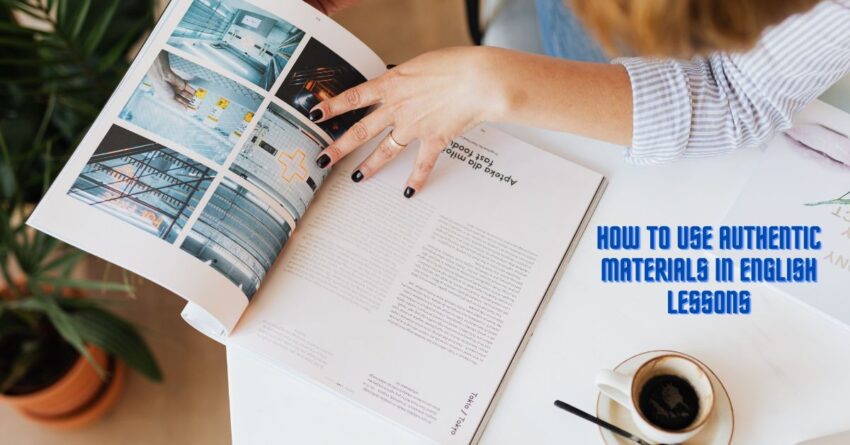Authentic material provides real-life examples to the students that other people are also using the language. It helps students in learning language and using it outside the classroom.
Any material created for a native speaker of a language is called authentic material. Authentic material is created for real-life purposes rather than language learning.
It is not designed for language learning but helps in language learning a lot. Students encounter authentic material in their daily life such as Newspapers, magazines, websites, TV shows, movies, podcasts, and songs.
The best way to expose your students to situational language is authentic material. Authentic material helps students in developing their social language skills and enhances their critical thinking.
Also Read: Mastering Business English: The Key to Effective Communication
It makes student able to use language in various social situation and make them aware of the language in use. Authentic material helps students in interpreting a variety of social contexts, registers, and styles of both written and spoken discourse.
Following are the tips on how to use authentic materials in your English classroom:
Choose Relevant Materials
Choose materials that are appropriate to your students and fulfill the needs of their language level and interest. For example, if you are teaching students of primary level songs and chants can serve best, but if you are teaching students of intermediate-level newspapers, podcasts, and movies are best.
Choose material that serves best your purpose.
Pre-teach Vocabulary
Authentic material may contain vocabulary or phrases your students may not understand. Watch your material before delivering it to the classroom.
Highlights difficult words and phrases and gives them the meaning of that word or phrase before their encounter. It facilitates their comprehension and meaning of unfamiliar words encountered.
Ask them to use these words or phrases in their language.
Customize Activities
A variety of activities can be created through authentic material. For example, if you’re using a job application as authentic material you can ask them to write a CV, or if you are using an article you can ask them to analyze the text and write their analyses in their own words.
Also Read: Why Creative Writing is Important for Children
You can also take a quiz about what they learned from that article. Initially use articles with easy wording and then gradually give them articles with tough vocabulary.
Encourage Discussion
Authentic material serves a great purpose for group discussions. Choose interesting topics and give them time to analyze text, audio, or video individually. Encourage everyone to participate in the discussion and share their opinion and ask open-ended questions.
Summarize the topic in the end and encourage students for critically thinking about the topic. Appreciate everyone’s opinion and thoughts.
Use a Variety of Material
Use a variety of materials in the classroom to reinforce learning and enhance students’ experience of a language. You can use videos, articles, and movie clips, songs to make the learning process easier and more interactive.
For example one day you could use text or newspapers but on the other day use movie clips or songs to make the learning process engaging and to introduce new concepts.
Role-play Exercise
Role-play exercises are one of the best ways in the language learning process. It can help your students in improving listening, and speaking skills and gaining confidence in the learning process.
Also Read: The Cask of Amontillado
Choose a scenario, such as ordering food at a restaurant, asking for direction or reporting, and asking your students to act accordingly. You can also choose a movie character of your choice and ask them to deliver its dialogue.
Conclusion
In conclusion, using authentic material makes learning easy and effective. A variety of learning materials makes the learning process interactive and engaging.
By following these you can increase your student’s motivation of learning the language and develop their analytic as well as reasoning skills.




1 thought on “How to Use Authentic Materials in English Lessons”